9 Things to Know About Wilderness Hazards
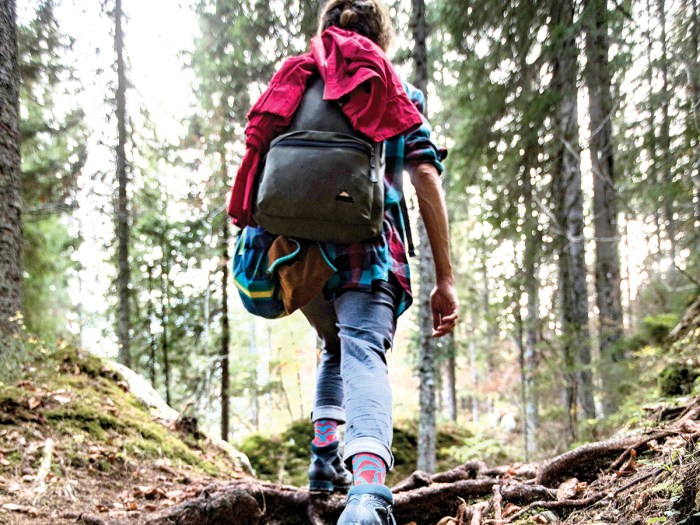
One of the best things about being in the wilderness is getting away from the rush of cities and everyday life. One of the biggest challenges of being in the wilderness is that you’re far away from the conveniences of cities and everyday life.
That’s why it’s critical to Be Prepared for a variety of things that could go wrong.
You can never fully eliminate all risk, but by understanding it, preparing for it and knowing how to respond to it, you can venture outdoors knowing you’re ready to face whatever challenges might await you.
Here are nine things you need to know about wilderness hazards.
#1. EXTREME TEMPERATURES
There are lots of outdoor activities that take place in conditions where heat or cold can be a hazard — sometimes on the same trip. A hike during a warm day can turn very cold in the evening or as you climb to higher altitudes.
Plan ahead so you can dress appropriately. In the heat, wear loose clothing so your sweat can evaporate. In the cold, wear layers so you can add and remove clothing as needed.
In both situations, keep an eye on your companions, and drink enough fluids so your urine remains very light yellow.
#2. RIVERS AND STREAMS
Crossing streams is always serious business. Take time to size up the situation before you cross. The best location to cross might very well be where the water is calm, even if the river or stream is wider at that point.
After choosing where you’re going to cross, look downstream to see where you could end up if you fall. Water that is higher than knee deep can sweep you away if it’s moving quickly. (That’s why the BSA’s Safe Swim Defense applies to non-swimming activities — such as stream crossings — whenever participants enter water over knee deep.)
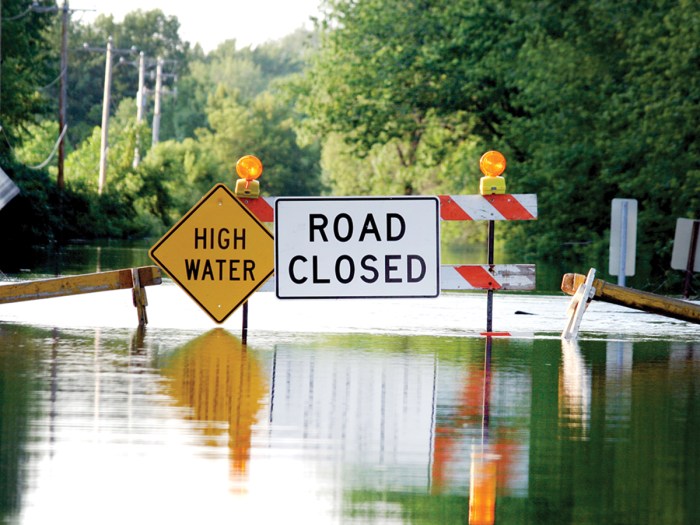
#3. FLOODS
Heavy rains can turn a small creek into a raging river in a matter of minutes. The result can be dangerous conditions miles downstream — and miles away from where it actually rained.
When traveling where flash floods are possible, be on the lookout for routes you can use to reach the safety of higher ground. Always pitch your tent above the high-water marks of past floods.
If you are caught in a flood, float on your back with your feet aimed downstream. Use your feet to push off boulders and other obstacles, and use your arms to steer yourself toward calmer water.
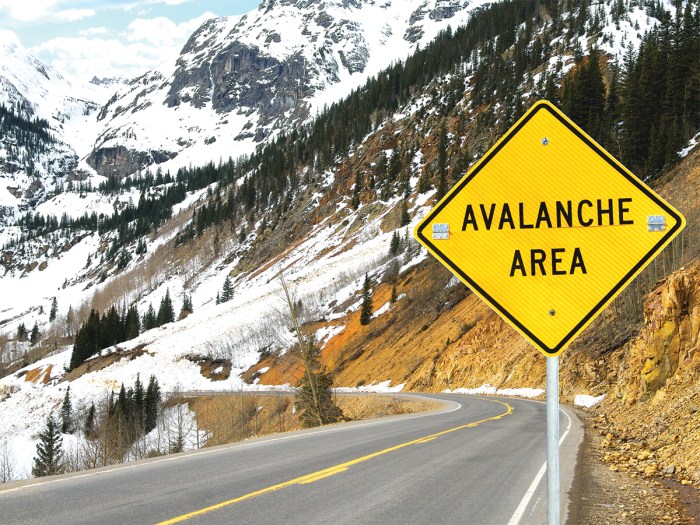
#4. AVALANCHES
The best protection against avalanches is knowing where, how and when they are likely to happen. Check with local authorities before you begin your trek. Look for steep terrain, new snow, signs of previous avalanches and cracking sounds that indicate settling of the snowpack.
If you can’t get out of the path of an avalanche, move your arms and legs in a swimming motion to keep your head above the surface. Push snow away from your face to form an air pocket that will allow you to breathe.
Battery-powered avalanche beacons emit a radio signal that can be picked up by the beacons of others if one or more people are buried in the snow.
#5. LIGHTNING
Open water, mountaintops, the crests of ridges, the bases of tall or solitary trees, and large meadows can be hazardous places during lightning storms. Getting into an enclosed building or motor vehicle offers the best protection.
Otherwise, move quickly to shore or descend to a lower elevation. Take refuge in a forest rather than standing beneath an isolated tree.
If a lightning storm catches your group in the open, spread out with each person at least 100 feet from anyone else.
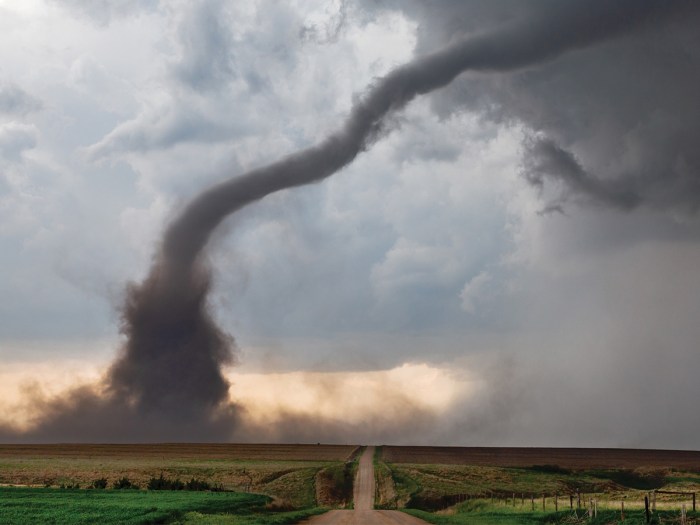
#6. TORNADOES
Most tornadoes occur in the spring and summer east of the Rocky Mountains, though they have touched down in other regions as well. Signs that a tornado could be forming include dark clouds sometimes tinged with green, heavy rain and hail, a funnel-shaped cloud descending from the clouds above or a roaring noise similar to that of a freight train.
Check the weather before leaving. If you are caught in the open as a tornado approaches, retreat to the lowest place you can find, such as a ditch or other depression in the ground.
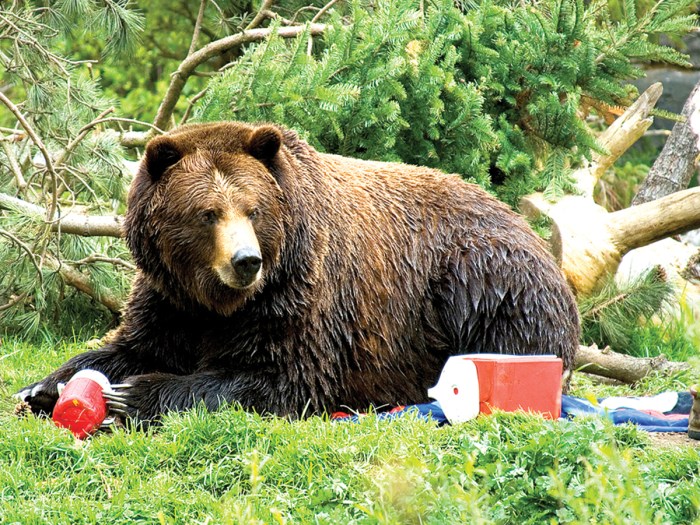
#7. WILDLIFE
Cougars, wolves and other large predators will almost always smell and hear you coming, and get out of your way without you ever realizing they were there.
Before going into bear country, check with local land management personnel for current information on bear activity and guidance on the best ways you can protect yourself.
Apply insect repellent to keep bugs away. Wear long pants and a long-sleeved shirt to protect yourself from ticks and chiggers.
Use a hiking stick to poke among stones and brush ahead of you when you walk through areas where snakes are common.
Learn how to recognize poisonous plants so you can avoid them.
#8. SAFETY AFLOAT
Rivers, lakes and other bodies of water are great for having fun outdoors. But water also carries with it the potential of more serious danger.
Cold water can bring on hypothermia, so wear non-cotton, quick-drying clothing, and always carry a set of dry clothes to change into. Boulders are a dangerous part of whitewater sports, so always wear a helmet. Several hundred people drown in the U.S. each year, so always wear a properly fitted U.S. Coast Guard-approved life jacket.
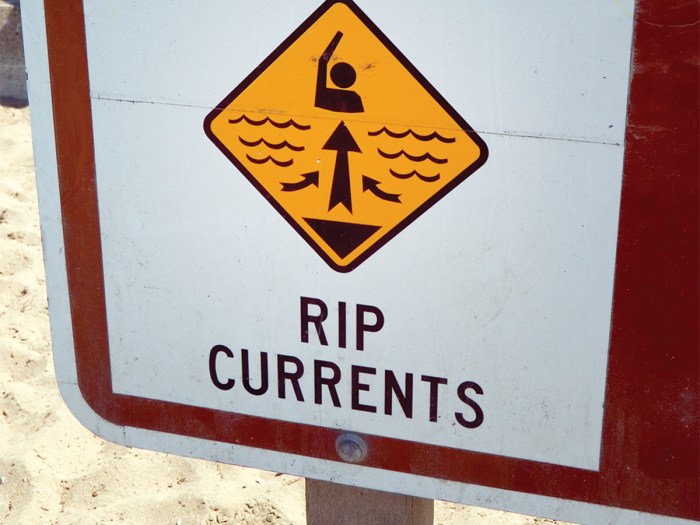
#9. RIP CURRENTS
A rip current is a strong, narrow flow of water that moves away from the beach; it can carry swimmers dangerously far away from land. If you find yourself in a rip current, try not to panic. Shout to people onshore to alert them of the situation.
Swim parallel to the shore to get out of the current. When the water feels calmer, head toward the shore. During all of this, you might become exhausted. Float on your back to catch your breath.
BE SAFE OUT THERE
The situations here do not cover every possible thing that could happen in the wilderness, but they are some of the most important to keep in mind. Do your homework before you leave, even if you’re traveling in an area with which you’re already familiar. https://www.scouting.org/health-and-safety/
